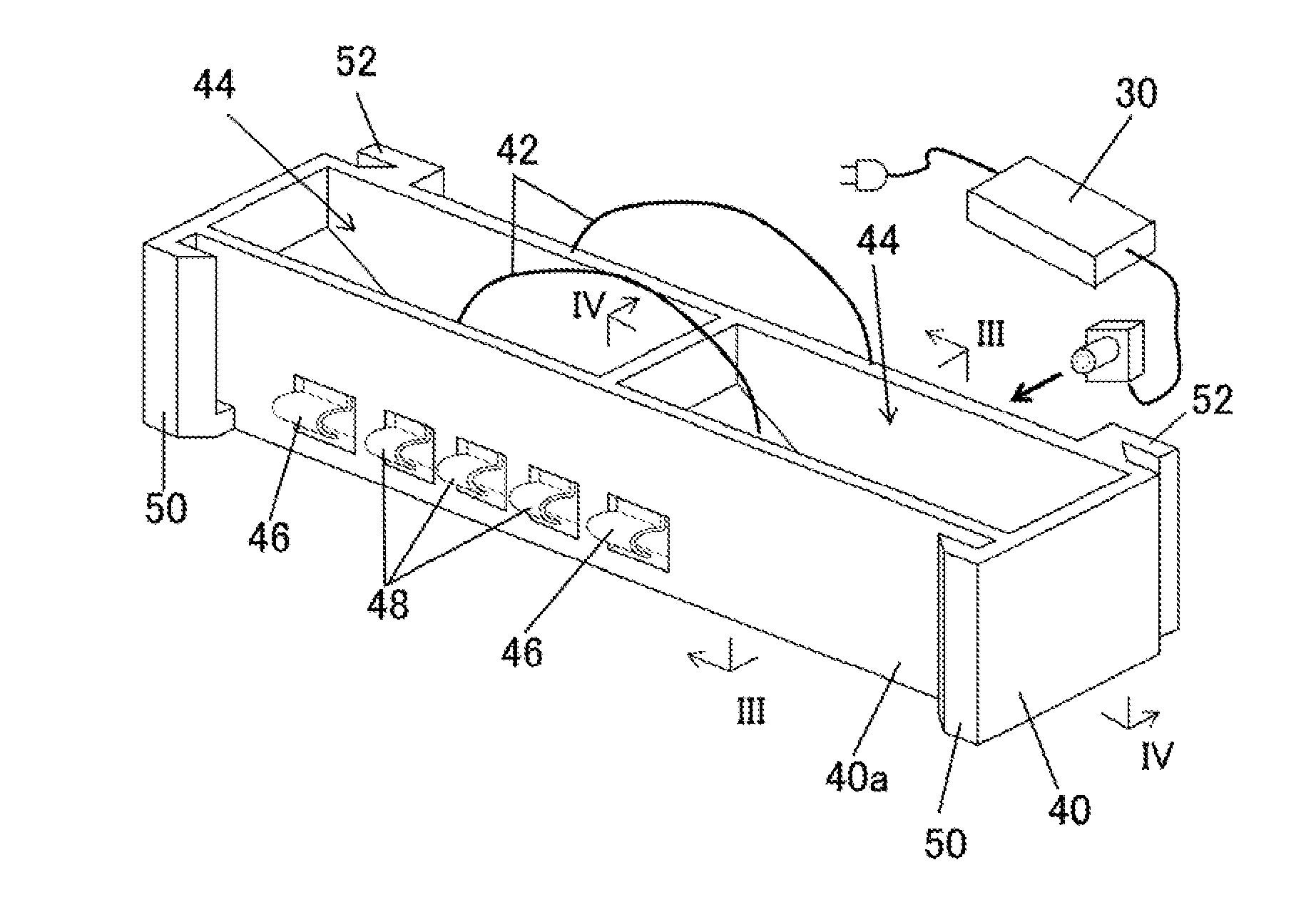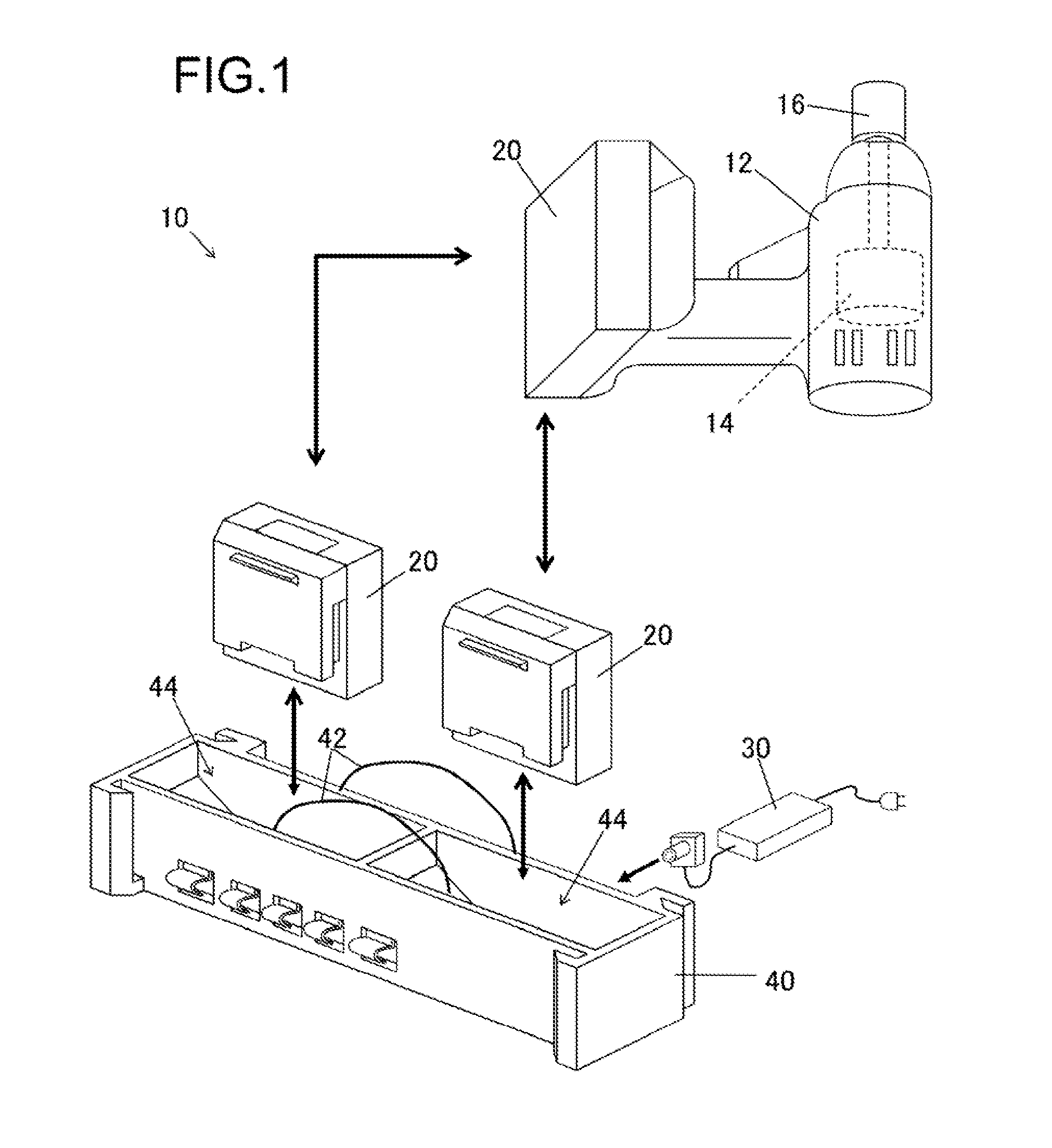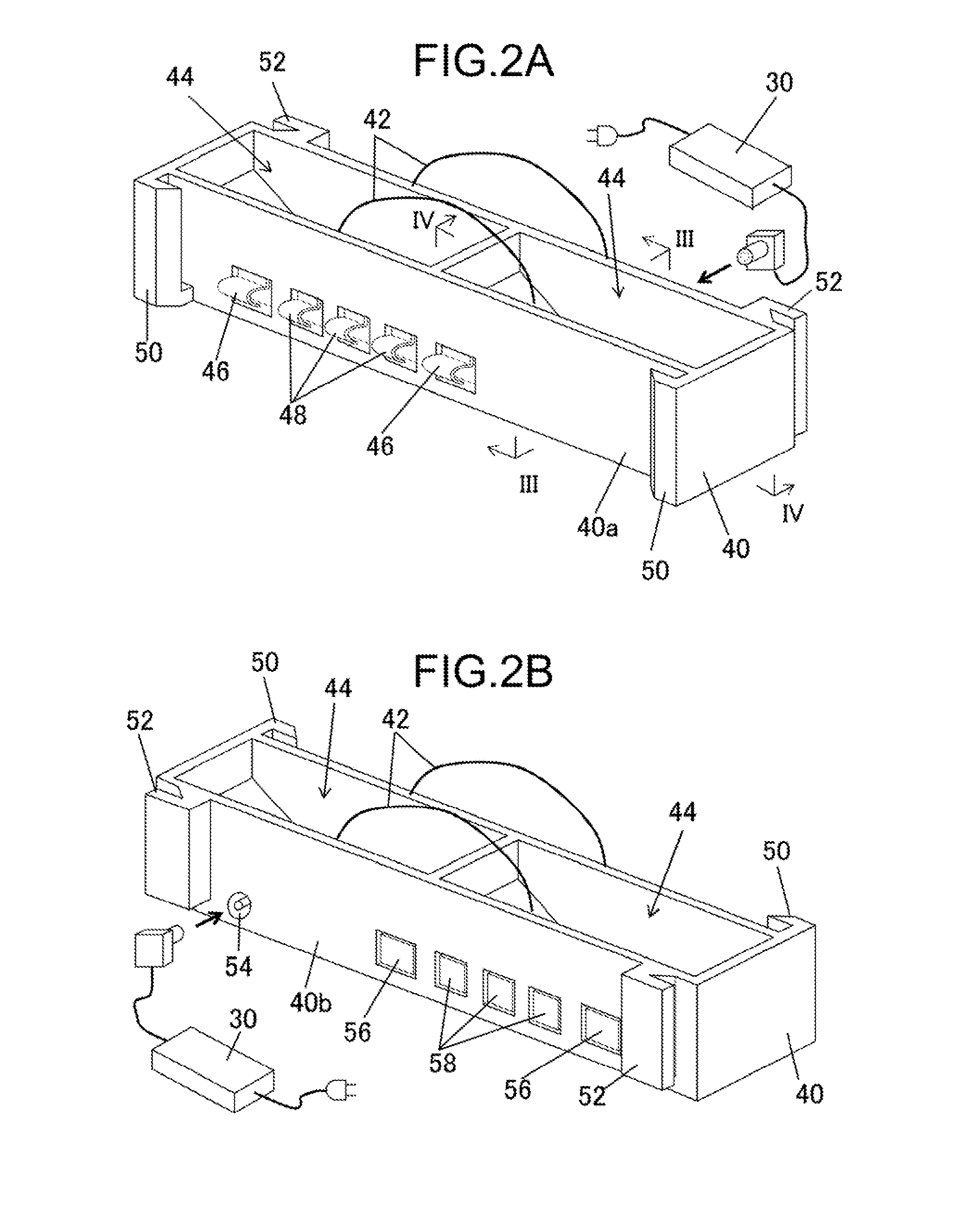Charger, Battery Pack Charging System and Cordless Power Tool System
a charging system and battery pack technology, applied in the direction of charging devices, charging exchange data, manufacturing tools, etc., can solve the problems of battery pack not being charged, user cannot perform the scheduled work, charging operation will not begin, etc., to achieve convenient use and reliably charge
- Summary
- Abstract
- Description
- Claims
- Application Information
AI Technical Summary
Benefits of technology
Problems solved by technology
Method used
Image
Examples
first embodiment
[0026]A first representative, non-limiting embodiment of a power tool system 10 according to the present teachings will now be explained with reference to FIGS. 1-6. This power tool system 10 comprises a hand-held power tool 12, battery packs 20, and a charger 40. The power tool 12 comprises a motor 14, which drives a tool 16, e.g., a tool bit coupled to the motor 14 via a chuck. While the motor 14 is preferably an electrically-driven, rotary motor, it may instead be a solenoid or some other electric actuator. The battery packs 20 serve as power supplies for the power tool 12 and supply electric current (power) to the motor 14. The battery packs 20 can be attached to and detached from the power tool 12. The battery packs 20 have a plurality of secondary batteries (e.g., lithium ion cells) built in (housed therein) and are rechargeable. The battery packs 20, once they have been detached from the power tool 12, can be attached to and detached from the charger 40, or as further explain...
second embodiment
[0046]A power tool system 210 according to a second embodiment of the present teachings will be explained with reference to FIG. 7, in which the same reference numbers will be utilized for the same elements / components as the preceding embodiment, such that it is not necessary to repeat the description of such elements / components.
[0047]The system 210 of the present embodiment comprises the hand-held power tool 12, the battery packs 20, a tray shaped charger 240, a carrying case 200, and a rapid charger 280. In this embodiment, engaging parts 250, which are adapted or configured physically (mechanically) couple or engage with corresponding rear side engaging parts on the charger 240, are provided on the side surface 200a of the carrying case 200. Therefore, the tray shaped charger 240 can be attached to and detached from the side surface 200a of the carrying case 200, thereby saving space inside of the carrying case 200.
[0048]The tray shaped charger 240 comprises two battery pack hous...
third embodiment
[0049]A charger 340 according to a third embodiment of the present teachings will be explained with reference to FIGS. 8 and 9. The charger 340 of the third embodiment differs from the charger 40 of the first embodiment in that the charger 340 uses a contact type terminal as a charging output part 362. That is, charging current is conducted from the charger 60 to the battery pack 20 via a wired connection. The charging output part 362 thus preferably includes contact terminals adapted or configured to contact and electrically connect to corresponding contact terminals on the battery pack 20. For example, the contact terminals of the battery pack 20 and the charging output part 362 may be designed in the same manner as known power tool charging configurations.
[0050]The remaining structures, elements and components of the third embodiment may be substantially the same as those of the charger 40 of the first embodiment.
[0051]With respect to all of the disclosed aspects and embodiments ...
PUM
 Login to View More
Login to View More Abstract
Description
Claims
Application Information
 Login to View More
Login to View More - R&D
- Intellectual Property
- Life Sciences
- Materials
- Tech Scout
- Unparalleled Data Quality
- Higher Quality Content
- 60% Fewer Hallucinations
Browse by: Latest US Patents, China's latest patents, Technical Efficacy Thesaurus, Application Domain, Technology Topic, Popular Technical Reports.
© 2025 PatSnap. All rights reserved.Legal|Privacy policy|Modern Slavery Act Transparency Statement|Sitemap|About US| Contact US: help@patsnap.com



